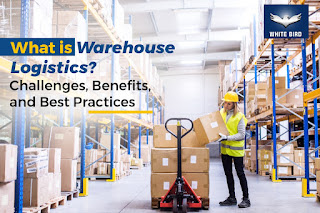3PL (third-party logistics) helps companies to focus on their core competencies, thus fostering business growth, market expansion, and innovation. Outsourcing logistics services to a 3PL provider can drive cost savings, allow access to cutting-edge technologies in logistics, and improve scalability, flexibility, and customer satisfaction.
1. Scalability for your business Worldwide
So, say your business is growing and you’ve
invested in a new warehouse that fits your budget. You’ve hired new staff to
run your Logistics and Distribution
Services operations – perhaps you’ve even paid to train them.
You’ve identified your best delivery options and set up your supply chain to
suit.
What next? How do you scale up your business
from here? No doubt, the infrastructure you have put in place will need to be
reviewed when you take that next step up. Staff may have to come and go; you
might even find that your new warehouse just isn’t suitable anymore.
2. Access to expertise &
efficiency
Many businesses choose to use third party
logistics because they just don’t have the knowledge themselves or within their
business. It’s likely your passion is for your product and the industry you
operate within – not necessarily about logistical compliance laws and policies.
3. Best value
delivery costs with United Kingdom
What business doesn’t like to save money?!
A huge advantage of Third Party Warehousing
and Distribution is the potential for cost savings. If you think that
working with a 3PL will be too expensive, consider the areas where money
will actually be saved, such as:
·
Lower delivery rates – most 3PL’s have access to lower shipping
rates due to the volume of orders they place.
·
Warehouses – finding a suitable and affordable
warehouse can be a difficult and time consuming task. A 3PL company has one
ready and waiting.
·
Staffing – again, providing your own warehouse
and logistics team is a huge undertaking. If your staff leave or need time off,
this could result in financial loss.
4. Optimized inventory management
An often overlooked advantage of
third party logistics is the opportunity to optimize your inventory management.
While logistical functions and transport management are often the main reason
why businesses use 3pl logistics companies uk, there is much more to be achieved.
White Bird
logistics and warehousing Ltd at Northampton keeps their customers in a win-win situation as it also
helps in the distribution network. The world is moving towards
globalization, and we can say that the world is moving at a fast pace, and so
does the economy, in such a scenario logistic industry
plays a key role in storing and transferring goods and services.
%20company.jpg)





.jpg)

